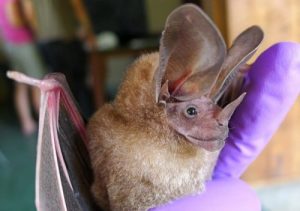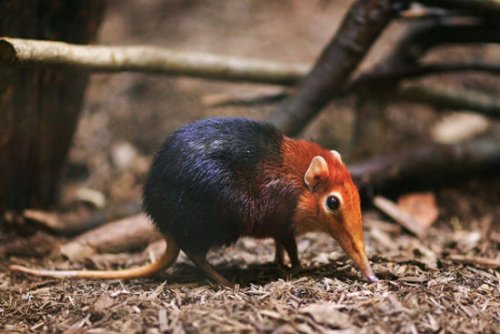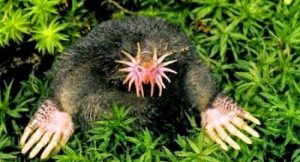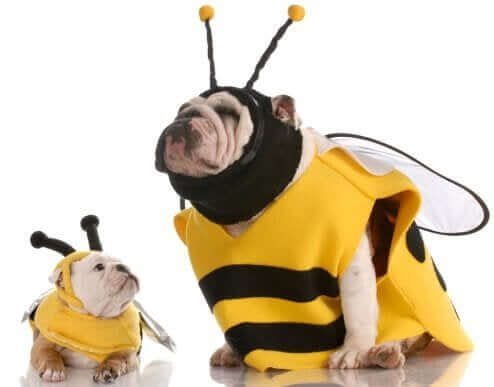この世に存在する不思議な生き物

これから紹介する動物はアニメーションでもなく編集された写真でもありません。彼らは実際に存在するとても奇妙な生き物なのです。地球上全ての動物の中で人間が知っている種類はわずか五分の一に過ぎないのです。
この世には知っている動物以外にもたくさん珍しい別の動物が存在しています。今回は多くの人々の注目を集めた数種類の不思議な生き物についてご紹介したいと思います。
世界の不思議な生き物たち
不思議な生き物たちは本当に驚くべき姿をしており、まるでジョージルーカスのSF映画に登場する生き物のように見えますが、実在しているのです。本当に存在する(あるいは私たちが現在知っている)最も奇妙な動物をみていきましょう。
1.キューバオオミミコウモリ
学名はNatalus Primusで、 ココウモリ科に属します。その奇妙な外観は、黄赤色の毛皮と漏斗状の耳が特徴的です。このコウモリは、キューバのピューネ島にのみ生息しています。スター・ウォーズのキャラクターに似ているので「ヨーダ」というニックネームで呼ばれています。
2.ヒメアルマジロ
この動物はプリンセスのようにドレスアップしたポケモンのキャラクターのように見えます。アルゼンチンのクヨ地域に住んでいる非常に小さなアルマジロ(わずか10センチ)です。絹のような白い毛皮はピンクの殻で覆われています。
ヒメアルマジロは地下で長時間過ごすので、地上で歩いてるのを見つけるのは難しいです。人間の近くにいるのを嫌い、捕まえられれば1週間ほどで死んでしまいます。
3.ゾウ-トガリネズミ
学名はMacroscelideaであり、奇妙な生き物であるだけでなく非常に珍しい名前を持っています。なぜ”ゾウ″トガリネズミと呼ばれるのでしょうか。それは間違いなく巨大な哺乳類の象と関係があります。ゾウ-トガリネズミは長い幹のような鼻を持っているからです。またトガリネズミの中で1番大きな体をしています。
長さは最長30センチ(尻尾は最長25センチ)に達します。主に昼間活動する動物で、岩の亀裂、木の幹の隙間、または放棄された巣に隠れています。

4.アイアイ
アイアイは、コウモリとサルとミーアキャットを掛け合わせたものです。巨大な目、ふんわりとしたしっぽ、大きな耳、霊長類のような長い指が特徴的で、マダガスカルにのみ生息しています。一般的にその一生を地上よりも木の上で送ります。アイアイは小枝や葉で作られたの巣の中で眠る夜行性の動物です。
5.キタケバナウォンバット
学名はLasiorhinus Krefftiiで、もっともな奇妙な哺乳類の1つです。ニューサウスウェルズ州、クインズランド州、ビクトリア州に古くから住んでいましたが現在はわずか33平方キロメートルのエッピング国立公園でのみ生息が確認されています。
残念ながら、絶滅の危機に瀕しています。豚のような鼻、オオヤマネコのような耳、リスのような体が特徴的です。
6.ホシバナモグラ
学名はCondylura Cristataで、モグラ科に属します。北米をまたがって生息していますが、多くはアメリカの北東部で見られます。
ホシバナモグラは全長20センチで、44の歯を持っています。そして1番の特徴として(世界で1番奇妙な動物と言われている) 22のピンクがかった触角のある鼻を持ち、それが暗闇で活動をするのを容易にします。また昆虫や幼虫、甲殻類を狩るのにも役立っています。

7.ノコギリエイ
名前からどんな外観をしているのか予想できるのではないでしょうか。この大きな魚の鼻(最長5メートルまで大きくなります)はまるでノコギリのような形をしています。ノコギリエイは、太平洋の深い亜熱帯水域のノコギリエイ科に属しています。
8.ハープスポンジ
不思議な生き物しているのならば、間違いなくこれが1番奇妙な生き物と言えるでしょう。この生き物はまるで船が難破した後に海に沈められたろうそく立てような形をしています。繊細でとても優雅に見えるかもしれませんが、甲殻類にとっては非常に危険です。甲殻類を見つけると素早くそれを食べてしまうからです。
引用された全ての情報源は、品質、信頼性、時代性、および妥当性を確保するために、私たちのチームによって綿密に審査されました。この記事の参考文献は、学術的または科学的に正確で信頼性があると考えられています。
- Abdullah, N., Elias, N., Miard, P., Lim, L. & Ruppert, N. (2019) Ultrasound use by Sunda colugos offers new insights into the communication of these cryptic mammals, Bioacoustics, 28(5), 397-403, https://www.tandfonline.com/doi/full/10.1080/09524622.2018.1463294
- Acosta, X., Corronca, J., Doma, I., González-Reyes, A., Rocha, M., y Repp, E. (2016). Evaluación de la diversidad en comunidades de tardígrados (Ecdysozoa: Tardigrada) en hábitats urbano y rural de la ciudad de Salta (Argentina). Iheringia. Série Zoologia, 106, e2016026. https://www.scielo.br/j/isz/a/WVQvNZdkHmxqY5KmgK6HjGd
- Ávila, V., González, A., González, T. y Vázquez, M. (2021). El género Ambystoma en México ¿Qué son los ajolotes?. CIENCIA ergo-sum, Revista Científica Multidisciplanaria de Prospectiva, vol. 28(2). https://www.redalyc.org/journal/104/10466283011/html
- Balk M., Benfield M., Branch T., Chen C., Cosgrove J., Dove A., Gaskins L., Helm R., Hochberg F., Lee F., Marshall A., McClain C., McMurray S., Schanche C., Stone S. y Thaler A. (2015). Sizing ocean giants: patterns of intraspecific size variation in marine megafauna. PeerJ, 3(715). https://peerj.com/articles/715/
- Bardele, C., Dominguez-Bello, M., Lynn, D., Obispo, N., Schultheiß, S. y Wright, A. (2017). Aviisotricha hoazini n. gen., n. sp., the Morphology and Molecular Phylogeny of an Anaerobic Ciliate from the Crop of the Hoatzin (Opisthocomus hoazin), the Cow Among the Birds. Protist, 168 (3), 335-351. https://www.sciencedirect.com/science/article/pii/S1434461017300214
- Bell-Anderson, K., Campbell, M., Campbell, H., Lawton, T., Udyawer, V. y Westcott, D. (2023) The southern cassowary (Casuarius casuarius johnsonii) remains an important disperser of native plants in fragmented rainforest landscapes. Austral Ecology, 48, 787–802. https://onlinelibrary.wiley.com/doi/full/10.1111/aec.13309
- Blier, P., Campbell, K., Devereaux, M., Munro, D. y Pamenter, M. (2021) Burrowing star-nosed moles (Condylura cristata) are not hypoxia tolerant. Journal Experimental Biology, 224 (19). https://journals.biologists.com/jeb/article/224/19/jeb242972/272464/Burrowing-star-nosed-moles-Condylura-cristata-are
- Bolnick, B., Di Fiore, A., Kirk, E., Lewis, R., Scarry, C. y Veilleux, C. (2016). Group benefit associated with polymorphic trichromacy in a Malagasy primate (Propithecus verreauxi). Scientific Reports, 6 (38418). https://www.nature.com/articles/srep38418
- Brum, S., Campbell, E., Da Silva, V., De Mello, D., De Souza, R., Gonçalves, R., Gravena, W. y Mintzer, V. (2023). The Amazon River dolphin, Inia geoffrensis: What have we learned in the last two decades of research?. Latin American Journal of Aquatic Mammals 20th Anniversary. 18.(1). https://www.lajamjournal.org/index.php/lajam/article/view/1523
- Charbonnier, Y., Papura, D., Rhouy, N., Rusch, A., Sentenac, G. y Touzot, O. (2021). Pest control services provided by bats in vineyard landscapes. Agriculture, Ecosystems & Environment, 306. https://www.sciencedirect.com/science/article/abs/pii/S0167880920303935
- Christensen, C., Couzin, I., Farine, D., Gall, G., Klarevas-Irby, J., Nyaguthii, B. y Papageorgiou, D. (2019). THE MULTILEVEL SOCIETY OF A SMALL BRAINED BIRD. Current Biology, 29. 1120-1121. http://erepository.uoeld.ac.ke/handle/123456789/1533
- Dalén, L., Dussex, N., Jarvis, E. y Robertson, B. (2022). The kākāpō (Strigops habroptilus). Trends in Genetics, Genome of the month, 38(8). https://www.cell.com/trends/genetics/fulltext/S0168-9525(22)00065-8
- Daly, I., How, M., Jared, S., Roberts, N. y Tetley, A. (2017). Colour preference in Odontodactylus scyllarus (Linnaeus, 1758) (Stomatopoda). Journal of Crustacean Biology, 37(4), 374–379. https://academic.oup.com/jcb/article/37/4/374/3865483
- Dehling J. (2017). How lizards fly: A novel type of wing in animals. PLoS ONE 12(12). https://journals.plos.org/plosone/article?id=10.1371/journal.pone.0189573
- Di Blanco, Y., Gaudin T. & Hicks P. (2018). Myrmecophaga tridactyla (Pilosa: Myrmecophagidae). Mammalian Species, 50(956), 1–13. https://academic.oup.com/mspecies/article/50/956/1/4968042?login=false
- Donnellan, S., Rouse, G., Stiller, J. y Wilson, N. (207). The Leafy Seadragon, Phycodurus eques, a Flagship Species with Low But Structured Genetic Variability, Journal of Heredity, 108(2). 152–162. https://academic.oup.com/jhered/article/108/2/152/2631585?login=false
- Du, B., Jiang, Y., Liu, W., Lu, B., Ruan, G., Yang, N. y You, Z. (2022). Spatio-Temporal Niche of Sympatric Tufted Deer (Elaphodus cephalophus) and Sambar (Rusa unicolor) Based on Camera Traps in the Gongga Mountain National Nature Reserve, China. Animals. 12(19). https://www.mdpi.com/2076-2615/12/19/2694
- Garde, E., Graham, Z., Heide-Jørgensen M. y Palaoro A. (2020). The longer the better: evidence that narwhal tusks are sexually selected. Biology Letters, 16(3). https://royalsocietypublishing.org/doi/full/10.1098/rsbl.2019.0950
- Grange, S., Kümpel, N., Mallon, D., Mapilanga, J., Queslin, E. y Quinn, A. (2015). Okapi (Okapia johnstoni) : conservation strategy and status review. Gland: IUCN and Institute Congolais pour la conservation de la nature, 6. https://portals.iucn.org/library/node/45844
- Haddock, S. y Johnsen, S. (2022). Macropina. Current Biology, 32(6), 256-257. https://www.sciencedirect.com/journal/current-biology/vol/32/issue/6
- Kabir, A. (2015). Most Beautiful Pigeons of Bangladesh. Animal and Veterinary Sciences. 3(2), 34-37. https://www.researchgate.net/publication/333682619_Most_Beautiful_Pigeons_of_Bangladesh
- Marks, J., Reid, M. y Vickers, R. (2023). First report of nectar robbing by sword-billed Hummingbirds Ensiferera Ensifera. Ornitología Neotropical. 34(2). https://www.researchgate.net/publication/373457868_FIRST_REPORT_OF_NECTAR_ROBBING_BY_SWORD-BILLED_HUMMINGBIRDS_ENSIFERA_ENSIFERA
- Martineau D., Measures L. y Lair S. (2016). Pathologic Findings and Trends in Mortality in the Beluga (Delphinapterus leucas) Population of the St Lawrence Estuary, Quebec, Canada, From 1983 to 2012. Veterinary Pathology, 53(1), 22-36.https://journals.sagepub.com/doi/full/10.1177/0300985815604726
- Marushchak, A., Marushchak, O., Nekrasova, O. y Tkachev, D. (2022). The Data on the Reproductive Biology of the Satanic Leaf-Tailed Geko, Uroplatus phantasticus (Squamata, Gekkonidae), at the BION Terrarium Center as a Contribution to ex situ Offspring Programs. Zoodiversity, 56(1). http://ojs.akademperiodyka.org.ua/index.php/Zoodiversity/article/view/304
- Matsumoto, Y., Miglietta, M. y Piraino, S. (2019). Transcriptome Characterization of Reverse Development in Turritopsis dohrnii (Hydrozoa, Cnidaria), G3 Genes|Genomes|Genetics, 9(12), 4127–4138. https://academic.oup.com/g3journal/article/9/12/4127/6028122
- Oliveira, L., Printes, R. y Schulz, F. (2021). Conflicts with Pumas in Southern Brazil: The Farmers’ view en M. Campbell (Ed.) y K. Kumar Jha (Ed.), Critical Research Techniques in Animal and Habitat Ecology: International Examples (pp. 201 – 224). Nova Science Pub Inc.
- Peterson, A. y McHenry, M. (2022). The persistent-predation strategy of the red lionfish (Pterois volitans). Proceedings of the royal society, 289(1980). https://royalsocietypublishing.org/doi/full/10.1098/rspb.2022.1085
このテキストは情報提供のみを目的としており、専門家との相談を代替するものではありません。疑問がある場合は、専門家に相談してください。








